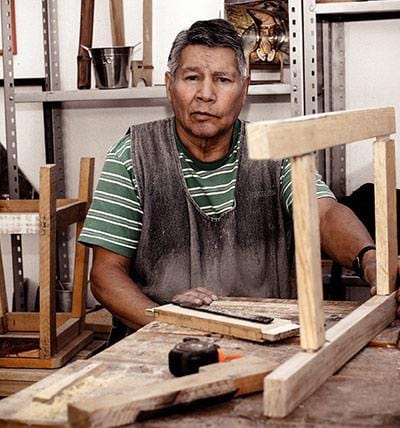Is it really necessary to employ those trusty food trays and plates? Do we need to wield dry utensils, bowls, and cups in our culinary endeavors? Well, let's delve into this thought-provoking difficulty, shall we? Picture this: you're in a bustling food service setting, armed with tempting delicacies. Imagine balancing that sizzling platter of delectable goodness on a wooden surface or, heaven forbid, on bare hands! Talk about a recipe for disaster! Not only can such a daring move create a hazardous situation, but it also runs the risk of contaminating the food itself. Ideally, my dear friends, we should utilize the proper tools of the trade – sturdy trays and plates, preferably made of safe materials like plastic, metal, or heat-resistant materials.
This way, we can gracefully navigate through our gustatory escapades without tipping the delicate equilibrium of food safety. Plus, let's not forget the convenience and cleanliness that these invaluable companions bring to the table. So, the next time you ponder the purpose of food trays and plates, remember that they add flair and finesse to your dining experience and act as a protective shield against potential mishaps. Load them up, my friends, and savor your meal without a worry in the world!
The Importance of Using Food Trays and Plates for Safety and Hygiene
Let's break it down, folks, and dive right into why food trays and plates are an absolute game-changer regarding safety and hygiene. Buckle up because we're about to embark on a bullet-point adventure!

- Shield Against Hazards: Food trays and plates act like a sturdy shield, protecting your hands from the scorching heat of piping hot dishes.
- Hygiene Heroes: They create a barrier between your meal and the wooden or dirty surfaces, keeping germs at bay.
- Equipment Etiquette: Properly washed and dried trays and plates ensure that your food doesn't come into contact with contaminated equipment or utensils.
- Temperature Tamers: These trusty companions help maintain the ideal temperature of your food, ensuring that it stays hot or cold for longer.
- Rest: Ever tried balancing a plate on your lap? Trust me, it's a precarious situation waiting to happen. Trays and plates give your food a comfortable resting spot so that you can dine peacefully.
- Serving Superstars: Trays and plates make serving a breeze when you're hosting a gathering, allowing you to dish out deliciousness with flair.
- Useful Allies: They're not just for dining out; you can also use food trays and plates at home to elevate your mealtime experience.
- Hazard Halters: Without trays and plates, you're setting yourself up for a hazardous encounter, risking burns, spills, and potential messes.
So, folks, let's give credit where it's due! Food trays and plates are the unsung heroes of the dining world, keeping us safe, maintaining hygiene, and making our lives much easier. Remember, it's not just about convenience; it's about keeping those hazards at bay while we enjoy our delicious feasts!
Exploring the Benefits of Using Plates and Trays in Restaurants and Kitchens
Let's dive into the wonderful world of plates and trays in restaurants and kitchens, shall we? Oh, the benefits are aplenty, my friends, and we're about to uncover them all!
- Effortless Elegance: Picture this – a server gracefully gliding through the dining room, balancing a stack of pristine dinner plates in one hand. It's a sight to behold, adding a touch of sophistication to the whole dining experience.
- Guest-Friendly: Plates and trays are the perfect companions for your finger-licking-good feast. They make it easy for guests to enjoy their meals without fearing contamination, keeping those pesky bacteria at bay.
- Image is Everything: We all know that we eat with our eyes first, right? A well-arranged dish on a ceramic or pottery plate is like a work of art. It enhances the visual appeal and elevates the dining experience to a whole new level.
- Sanitary Solutions: Plates and trays provide a sanitary barrier between your food and the table surface. No more worries about toxins or unsightly residue ruining your meal!
- Practical Prowess: Plates and trays make the lives of servers and kitchen staff much easier. They can stack and accommodate multiple dishes, providing efficient service and timely delivery.
- Safety First: My friends, the health department is all about promoting safety. And guess what? Using plates and trays is one way to stay on their good side. They always keep those sanitized dishes ready, ensuring safe food contact surfaces.
- Ditch the Finger Bowl: Let's be real – nobody wants to plunge their fingers into a communal bowl of water. With plates and trays, you can bid farewell to the finger bowl and opt for a more hygienic dining experience.
- The Art of the Napkin: Ah, the trusty napkin! It is on a plate or tray, ready to catch spills or elegantly dab away crumbs. It's like a knight in shining armor, protecting your clothing from food mishaps.
- Beverage Bliss: Oh, and let's not forget the humble glass or cup resting comfortably on its designated spot. They hold your favorite drink, whether a refreshing cocktail or a soothing cup of joe, completing the dining experience.
So, my friends, whether dining in a corporate setting or whipping up a culinary masterpiece at home, plates and trays are the unsung heroes that enhance the aesthetic, promote cleanliness, and ensure a practical function. They're like the secret weapon of the kitchen, the skillful sidekick that makes every meal a delight. Let's raise our plates and toast their wondrous benefits to our dining experiences!
Why Food Trays and Plates are Essential for Maintaining Clean and Dry Dining Spaces
When it comes to keeping dining spaces clean and dry, food trays and plates are like superheroes swooping in to save the day. They're essential for a whole bunch of reasons. Firstly, they prevent messy spills and stains from infiltrating the tablecloth or the pristine surface beneath. Instead of fretting over a mishap, you can relax and enjoy your meal without care. Secondly, these trusty companions discourage the spread of germs and bacteria.
They act as a shield, keeping your food away from any lurking nasties that might be lurking on the table.
Thirdly, food trays and plates make cleaning up a breeze.
Instead of scrubbing away at a table that's seen better days, you can whisk away the tray or plate and send it to the dishwasher.
No fuss, no muss!
Lastly, these vessels are expert organizers.
With a well-arranged tray or plate, you can keep your food separate and ensure that the savory doesn't mix with the sweet unless that's your thing.
It's all about maintaining harmony on your plate.
So next time you're dining out or having a cozy meal at home, give your thumb a little nudge and reach for a trusty tray or plate. Your mealtime experience will be elevated, and your dining space will thank you with a sparkling clean, and dry ambiance.
Enhancing Food Safety with the Use of Plates, Trays, and Utensils
Using plates, trays, and utensils is a surefire way to enhance food safety, keeping everyone healthy and happy. Here's why:
- Plates and trays act as protective shields, preventing direct contact between food and potentially contaminated surfaces.
- Utensils, like spoons and forks, give you a handy tool to scoop, stab, and devour your meal without getting your hands dirty.
- You can neatly arrange your food with plates, creating a tantalizing feast for the eyes and ensuring different dishes don't mingle where they shouldn't.
- Trays make it easy to carry multiple plates and glasses in one go, reducing the risk of fumbling and dropping precious cargo.
- When handling delicate foods, like salads or desserts, plates provide a stable platform so you don't end up with a culinary disaster.
- Utensils are designed to handle various food textures and consistencies, so you can confidently dig into anything from a tender steak to a slippery piece of sushi.
- Plates and trays can be lined with paper towels or disposable liners to catch any drips or spills, making clean-up a breeze.
- Utensils with a protective coating, like non-stick or antimicrobial finishes, add a layer of safety and cleanliness to your eating experience.
- Mastering utensil use takes skill and practice, but once you've got it down, you'll feel like a culinary wizard, effortlessly enjoying every bite.
So, the next time you sit down for a meal, grab a plate, a tray, and trusty utensils. You'll foster a safer dining experience, one delectable mouthful at a time.
The Role of Plates and Trays in Carrying and Placing Meals, Dishes, and Bowls on Tables
Plates and trays play a vital role in table setting, bringing meals, dishes, and bowls to their rightful places in style. They're like the trusty hands that delicately carry culinary creations to hungry souls. When it comes to placing food on tables, plates are the unsung heroes. They cradle your favorite dishes, giving them a pedestal to shine upon. Without plates, the table would be a chaotic jumble of food with no order or grace.

On the other hand, trays are the skilled jugglers, carrying multiple plates and bowls with finesse, navigating through the maze of tables and chairs. They ensure your meals arrive intact, preventing any catastrophic crashes or splatters. But it's not just about transportation. Plates and trays encourage a sense of presentation, elevating the dining experience from ordinary to extraordinary. Food can be arranged with their guidance like a work of art, showcasing colors, textures, and flavors.
They're also the tricky balancing act that keeps your dishes from teetering on the edge, risking a disastrous crack or spill. So next time you gather around the table, remember the unsung heroes that make it all possible. Praise the plates and trays, for they are the silent maestros of mealtime.
To Sum Things Up
Well, folks, when it all boils down, is it necessary to use food trays or plates? - isn't as cut and dried as you might think. By golly, it can depend on many variables, a toss-up between the nature of the food, the context, and personal preferences. With no strings attached, we can confidently say food mustn't always be placed directly on trays or plates. It's not the be-all and end-all. It's standard protocol in most settings, yet it's not set in stone. Tacos, for instance, come swaddled in their tortilla cradle, and finger food parties would be as dull as dishwater without the grab-n-go vibe. But hold your horses! This doesn't give carte blanche to toss etiquette to the wind. Trays and plates remain important, preventing us from biting off more than we can chew. So, folks, while there's room for bending the rules, remember - we're not trying to reinvent the wheel here!

FAQs
In what situations would you say that using trays or plates is not necessary?
Well, you've got to read the room, haven't you? When you're knee-deep in a tailgate party or snacking on popcorn at the movies, the food must just get to your mouth; no plates are needed. It's all about context - like eating an apple straight from the tree.
Can I serve food on something other than a tray or plate, like wood, for example?
Oh, absolutely, you bet your boots you can! Just as a bird takes to the sky, certain foods take to wood beautifully - think a charcuterie board or sushi. But remember, keep the cleanliness standards sky-high; no one wants to bite the hand that feeds them with bacteria.
Why is it standard to use trays or plates?
Great question, and it's not just for the sake of going through the motions. Plates and trays play a bigger role than you'd think. They're the unsung heroes, preventing a messy fallout and keeping the peace between your food and everything else. So next time, before your burger meets the table, remember, there's a reason we say, "don't throw the baby out with the bathwater"!
ABOUT THE AUTHOR
Olivia Poglianich
Content Strategist
Olivia Poglianich is a nomadic brand strategist and copywriter in the wooden crafts and 3D product design space who has worked with brands such as Visa, Disney and Grey Goose. Her writing has taken her all over the world, from a Serbian music festival to a Malaysian art and culture event. Olivia is a graduate of Cornell University and is often writing or reading about travel, hospitality, the start-up ecosystem or career coaching. Her latest interests are at the intersection of web3 and communal living, both on and offline.






